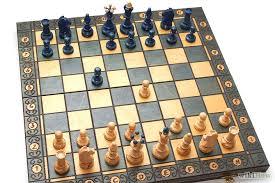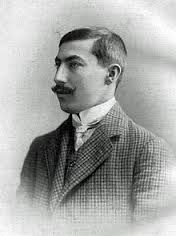
Defending Against Sicilian Attacks: White's E5 Push: Part 1
The Scheveningen is a rich pawn structure fraught with myriad breaks and transformations. I enjoy pawn structures which features thematics break and so it is no surprise that I was attrached to the Sicilian Kan which tends to be less sharp than Yugoslav of the Dragon or the English Attack of the Najdorf; however, White has his fair share of Kingside shenanigans—to which, sadly, I have fallen victum to on many occasions.
For relief I have consulted the databases in serach of games displaying solid defensive techniques with the Black pieces so that I might better repell my agressors. I wish to share this labor with you so hoping that I might spare you the same defeats I experienced.
White has at his disposal at least three main Kingside attacking pawn advances.
- f4->e5
-
f4->f5
-
g4->g5
In this multipart series, I want to look at games where Black sucessfully defended against all three of these attacks and try to asertain some guides which will help the discerning Sicilian practitioner decide which defensive method to employ.
As always of course, I will provide YouTube videos for those who would rather watch than read. You should susbscribe to MY CHANNEL to find many more videos on other topics as well!
Todays games will feature the e5 break from White as that is the break that I encounter most commonly. In response to e5 Black must decide if he will capture on e5 and regardless, he must then decide if he wants to play Nfd7, Ng4 or Nd5. Sometimes Black will interject Nxd3 (nearly always in the Kan White stations his Bishop on d3) should a Knight stand on c5. I found at least one game where b4 was a successful response to e5 though this seems rare except at very early stages of the game when Black's Bishop is not yet on e7.
The primary consideration in capturing on e5 which will open the f-file is whether or not White will be able to create dangerous threats along the file and in particular against the f7 square. As e5 will be an isolated pawn, Black must judge if he will be able to apply sufficient pressure against the pawn whcih can offset White's attack. Thirdly, as f4 and then e5 somewhat weaken the White King Black should reckon his counter attacking chances as he will usually have c5 for his DSB and the LSB often already stands on b7.
Let's see some practical examples.
Particularly instructive was Black's delay in capturing on e5 as he was waiting for a moment when White's DSB was unable to use the open diagaonal. Also, note the typical f5 maneouver which can sometimes serve to block the LSB as well as regain f6 and allows Black's major pieces to defend the Kingside laterally.
In our next example we'll see an instance of the immediate capture on e5 being more favorable.
Important here was Black's pressure on e5 which prevented White from mobilizing his Queen to an attacking position. Also, we again saw that f5 is an effective defensive tool as well. As a last side note, capturing the Bishop on d3 is also very effective against e5 as the resulting pawn on d3 is backward and can be quite weak.
That's it for today, but worry not; we're not done with the e5 push. Be on the look out for part two exploring more of Black's defensive abilities.
As always, thanks for reading! Be sure to ADD ME as a friend so that you'll be notified when I publish my next blog. Be sure to leave a comment. I love to hear from you
